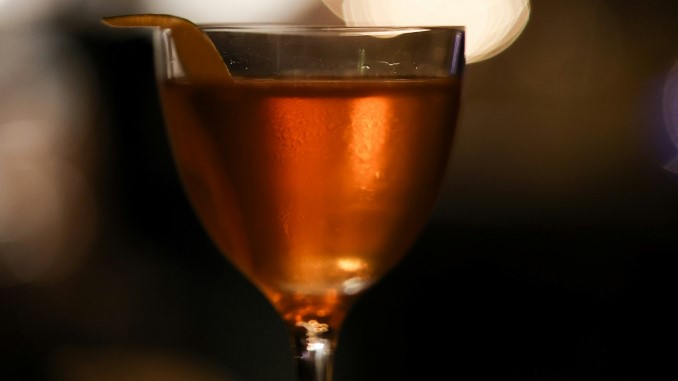Cocktail Spotlight: The Old Pal
Photos via Unsplash, Oliver Plattner
Cocktail Queries is a Paste series that examines and answers basic, common questions that drinkers may have about mixed drinks, cocktails and spirits. Check out every entry in the series to date.
It’s sort of funny to think that a cocktail’s relatively popularity over time often has little to nothing in common with how ubiquitous it is in the current moment. Take the Boulevardier, for instance–the bourbon-based riff on the still intensely popular Negroni was invented in the late 1920s and then more or less proceeded to fall off the face of the Earth until Ted Haigh dredged it back up in 2007. Now, the Boulevardier is EVERYWHERE–you can find it on both sophisticated cocktail menus and scrawled across chalkboards at dive bars. In less than a decade, the Boulevardier achieved total cocktail omnipresence. Meanwhile, though, that cocktail’s sibling the Old Pal was created around the same time and managed to maintain its visibility for decades afterward … but is largely forgotten in comparison to the Boulevardier today. You might say that the Old Pal peaked early, and the Boulevardier peaked late.
Regardless, this is still a fine cocktail that fits a specific sort of hankering, a niche unexplored by either the Negroni or the Boulevardier. You’ll still see the Old Pal on cocktail menus from time to time, but it’s more likely to be found in slightly more upscale, drink-nerdy establishments, perhaps because it’s a bit less inviting and a bit more cerebral than the Boulevardier, whose popularity has no doubt been buoyed in recent years by the sometimes suffocating fixation on bourbon in the U.S. The rye whiskey-based Old Pal, on the other hand, has probably been riding in that cocktail’s wake for the last decade, quietly staging a comeback of its own.
It is likely that the Old Pal was invented by bartender Harry MacElhone at his influential Harry’s New York Bar in Paris, France, around the same time that MacElhone created the Boulevardier. It first appears in print in the same 1927 Barflies and Cocktails book, described as an equal parts combination of Canadian whiskey, Italian (sweet) vermouth and Campari. This formulation–which is extremely similar to the Boulevardier–didn’t seem to last long, and the Old Pal instead became based around rye whiskey, with French vermouth (dry) likewise replacing the sweet. This gave the drink more conceptual distance from the Boulevardier, allowing it to carve out more of a niche for itself. Some still make the cocktail with its original equal parts formulation, though this results in quite a dry and bracingly bitter drink. More often, you will now see the Old Pal made with a greater proportion of whiskey, as in the following recipe:
— 2 oz rye whiskey
— 1 oz dry vermouth
— 1 oz Campari
Combine all ingredients in a cocktail shaker/mixer tin with ice. Stir well to chill, and then strain into either a cocktail glass/coupe for “up” presentation, or over ice in a double old fashioned glass for on-the-rocks. Garnish with a twist of expressed lemon or orange peel.
The allure of the Old Pal is to take some of the elements of the Boulevardier and refine them into something sharper and more streamlined, but also lighter in texture. Unsurprisingly, the drink reads as less sweet than the Boulevardier, as most American or Canadian rye whiskey presents as drier and more spice forward, but it’s the switch from sweet to dry vermouth that really enhances this perception. The Old Pal is thus more herbal, floral or spicy in comparison to the rounder, richer Boulevardier. I rather like this one presented up, in a coupe glass, where it makes for a fairly bitter, nuanced sipper. It’s still certainly a spirit-forward cocktail without any non-alcoholic ingredients in it, but it has a lighter and brighter feel to it than its spiritual siblings. Like the Boulevardier, I find that it tends to favor slow drinking, thanks to its bitterness. The twist of citrus shouldn’t be overlooked here, as it reinforces the perception of brightness and sharpness.
At the end of the day, the Old Pal probably isn’t as widely inviting as something like the Boulevardier, a drink that is likely to be somewhat easier for the layman to enjoy–which is probably why you can now order one at a dive bar in the first place. But it’s a good addition to one’s rolodex of Negroni variants, and a drink that really fits a certain mood, when you’re looking for a dry, complex sipper. In that context, the Old Pal is as comfortably reassuring as the name would suggest.
Jim Vorel is a Paste staff writer and resident beer and liquor geek. You can follow him on Twitter for more drink writing.







































